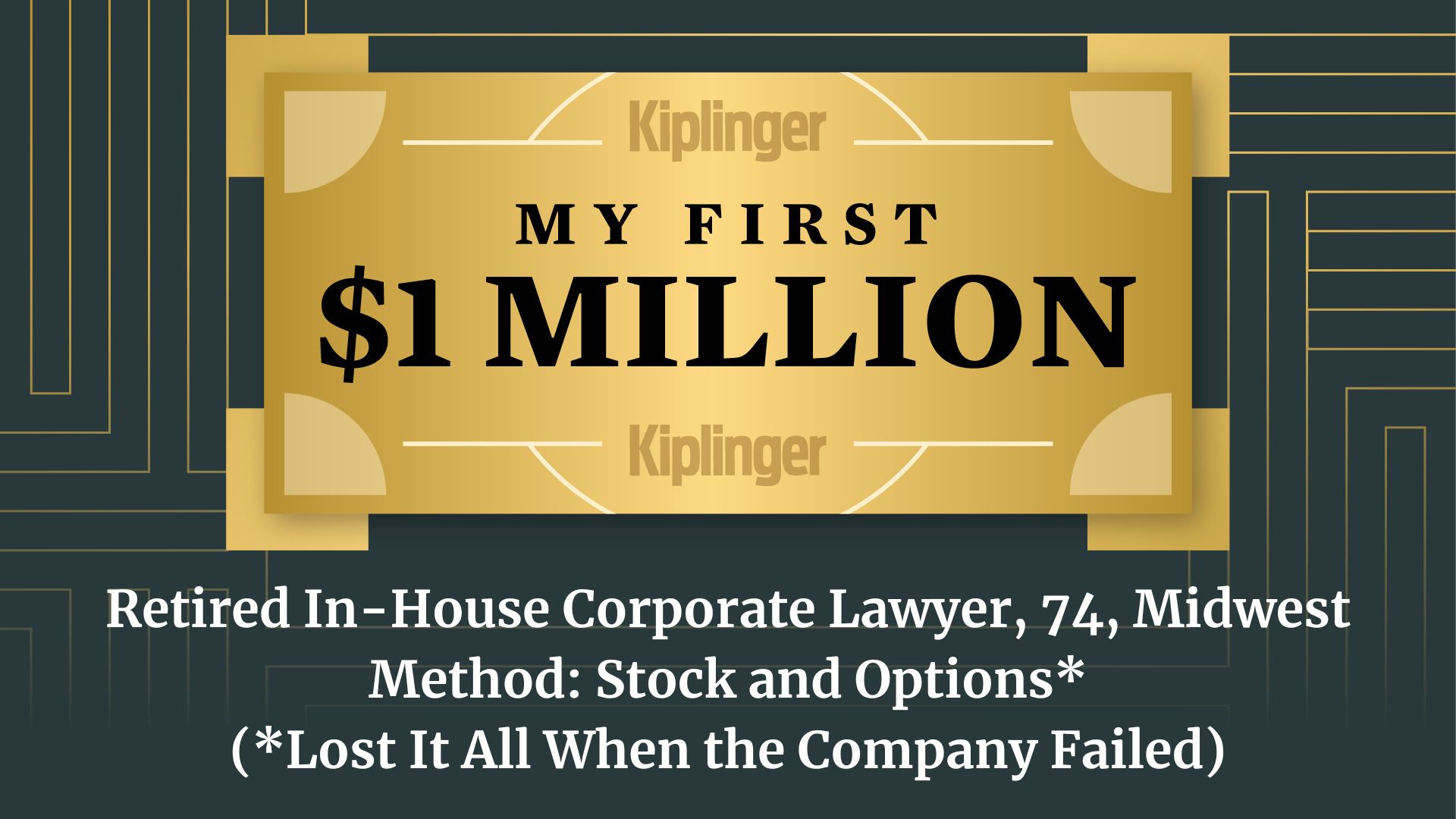Seven Reasons Your Home Insurance Costs Are Surging
Home insurance costs are skyrocketing, with specific factors driving the surge. Here's how to whittle down your premium.

If you were hit with a renewal quote that's significantly higher than what you were paying, you're not alone. It's no secret that home insurance costs are rising, in large part due to increased claims from floods or other natural disasters, inflation and elevated home prices.
Home insurance rates are up 40.4% cumulatively since 2019, according to LendingTree. Insurance costs are also increasing due to industry consolidation and disruption as insurance companies exit whole markets like California and Florida.
The average home insurance premium now stands at $2,409 per year for a policy with $300,000 in dwelling coverage, according to Bankrate. But premiums can vary widely, as some states have more expensive premiums while other states enjoy cheaper home insurance.
From just $107.88 $24.99 for Kiplinger Personal Finance
Become a smarter, better informed investor. Subscribe from just $107.88 $24.99, plus get up to 4 Special Issues

Sign up for Kiplinger’s Free Newsletters
Profit and prosper with the best of expert advice on investing, taxes, retirement, personal finance and more - straight to your e-mail.
Profit and prosper with the best of expert advice - straight to your e-mail.
Since many elements affect the cost of home insurance, some homeowners are paying more than quadruple the national average. If you feel like your premiums have gotten out of control, here are eight factors that could be driving your home insurance rates higher.
Because of this, you'll need to check your policy more frequently to ensure you get a good deal and enough coverage.
Seven reasons your home insurance costs so much (and what to do about them)
Here are seven of the biggest factors that influence the amount you pay for home insurance.
1. Location
If you've moved recently and are shocked at the quotes you've gotten for home insurance, the culprit could be your new neighborhood. Homes in high-risk areas typically have higher premiums.
Insurance companies assess the risk associated with your area by looking at the likelihood of severe weather, such as floods, wildfires and hurricanes. It will also check local crime rates, your home's proximity to a fire station and other factors that raise (or lower) your home's risk.
Some insurance providers even factor in your house's distance to the nearest fire hydrant — homes less than 100 feet away may qualify for lower insurance rates.
What can you do?
If you're planning to move, check the average home insurance rates in the town or state you're headed to. If you're downsizing to lower your costs, for example, it's important to factor in home insurance premiums when deciding where to downsize to. Florida might look like a dreamy place to retire, but the first time you get hit with a $12,000 or higher home insurance bill, you might regret the move.
If you're not planning to move, do some digging to find out what particular risk factors insurers are worried about in your area. If it's the crime rate, for example, investing in some DIY home security upgrades (and then telling your insurer about it) could earn you a discount on your premiums.
Homeowners with a security system pay $100 less, on average, for their home insurance premiums than those that don't have one, according to Policygenius, an insurance marketplace.
If it's a weather-related disaster, taking on some home hardening projects that protect your home from the particular hazards you face could also help bring your premium down a bit.
2. Type of coverage
The level of coverage you choose plays a key role in determining your premium. Generally, there are three types of coverage: dwelling coverage (protects your home's structure), personal property coverage (protects your belongings), and liability coverage (covers legal expenses if someone is injured on your property). The more extensive your coverage, the higher your premium will be.
What can you do?
Check your coverage once a year. You can do this when you shop for new quotes. Make sure the details and coverage types are up to date. For example, maybe you paid for an endorsement on your policy to get extra coverage for a high-value item (like expensive jewelry or a wine collection) but you've since gotten rid of it or moved it somewhere else.
Maybe you added umbrella insurance to your policy because you were a landlord managing several properties, but you've since sold them off and retired. Removing the endorsements and other added coverage you no longer need can help shave down your premium without touching the coverage you do actually need.
By the same logic, you might also need to adjust coverage based on changes you've made to the home. For example, are you covered for a work shed in the backyard that you've since torn down? Did you have a pool that you've since buried? Changes like these can result in lower coverage needs.
3. Deductible
A deductible is how much you're required to pay out of pocket in the event of a loss before your insurance coverage kicks in. Typically, home insurance deductibles range anywhere from $250 to $5,000. The lower your deductible, the higher your premium will be.
What can you do?
Increasing your policy's deductible can lower your premium substantially. According to ValuePenguin, raising a deductible from $500 to $1,000 decreases a policyholder's premium by 6% on average.
It makes sense when you think about it. By agreeing to pay more out of pocket, you're lowering the amount the insurer would have to pay out on any claim. Indirectly, you're also lowering the risk to the insurer that you'll file a claim at all since it doesn't make much sense to file a claim for damage that costs less than your deductible.
Just make sure you have enough money to cover the higher deductible amount before amending your policy. A good rule of thumb is to keep your deductible amount in an emergency fund that you'll only ever tap into in the event of an emergency.
As long as you're keeping that cash stashed away for a rainy (or hurricane-y) day, make sure it's in a high yield savings account so you're earning some extra cash on it while it sits there.
4. Your home's age and condition
The age and condition of your home can significantly affect your premium. It boils down to risk. For example, a newer roof provides better protection for your home against the elements than an older roof.
As a result, newer, well-maintained homes are often considered less risky to insure and may be eligible for lower premiums. If you think you will save money by delaying home repairs, think again, as your premium may increase following a claim involving poor condition.
What can you do?
You can't roll back time. But, you can modernize and upgrade the components that count. In homes old enough to have knob and tube wiring, for example, rewiring your home can substantially lower the risk of electrical fires and shock hazards. That's not just good for you, but also an upgrade your insurer will appreciate.
If you're not sure what about your older home is making it riskier than a newer build, bring in an inspector to see how its electrical, plumbing and other systems hold up to current building codes. Chances are, they'll catch quite a few things and you don't need to overhaul everything at once.
Just chip away at the list over time and notify your insurer each time you make an upgrade to see if that translates into a lower premium.
5. Your claims history
Your personal claims history can also affect your premium. If you've made multiple home insurance claims in the past, insurance companies may view you as a higher risk and decide to charge a higher premium.
Typically, home insurance claims stay on your Comprehensive Loss Underwriting Exchange (CLUE) report — the most commonly used claims record — for seven years, according to WalletHub.
Some insurance providers allow customers to file a certain number of claims (or claims up to a certain dollar amount) without a rate increase. In contrast, others will raise a customer's increase premiums by as much as 10% after a single claim, Policygenius says.
What can you do?
Switching to a new provider after filing a claim with your current insurer won't make a difference here. They're all generally checking that same CLUE report. While you can't take back a claim that's already been filed, you can do your best to avoid making one going forward.
As a rule of thumb, you shouldn't file a claim unless you know the cost of repairs will significantly exceed your deductible. Say your deductible is $5,000 and a storm rips away a few shingles from your roof. If it's a small repair that would probably only cost a couple thousand dollars, don't bother getting insurance involved.
At the same time, don't let the fear of a higher premium prevent you from making a claim when you really need to. That's why you pay for home insurance, after all. A 10% premium increase over the next few years is worth it to save thousands of dollars in repairs after a major storm.
6. Credit history
Some insurers use your credit score or credit history report to assess your risk as a policyholder. The theory goes that homeowners with bad credit are more likely to file a claim than those with good credit.
According to a Nerdwallet analysis, homeowners with bad credit paid about 71% more for home insurance than those with good credit. In some states, premiums were more than double if you had bad credit.
However, a few states — California, Maryland, and Massachusetts — prevent insurance companies from using your credit information to determine your insurance rate.
(Note: Requesting a home insurance quote does not typically affect your credit score, since most companies use “soft inquiries” to review your credit history.)
What can you do?
Monitor your credit score and follow all the general advice for improving it. This can help you potentially qualify for a lower premium. Aim for a score above 690 but, the higher, the better.
You may not be able to call up your current provider and ask for a good credit discount. But if you know your credit has recently improved enough to bump you into a new category — like going from fair credit to good credit — take that as a cue to shop around for a new quote. You could end up saving hundreds just by switching home insurance as your credit improves.
7. You're not taking advantage of discounts
Many insurance companies offer discounts that can lower your premium. These may include discounts for bundling your home and auto insurance, paying your premiums for the year upfront, enrolling in autopay or being a member of the military. Some insurers even offer discounts to customers who sign up for paperless billing.
There are lots of home-related discounts as well. As mentioned earlier, things like installing a home security system may qualify you for a discount. But, if you installed the system and never told your insurer about it, you're leaving that discount on the table. The same goes for home renovations, especially in an older home.
What can you do?
Call up your insurance provider this week to ask what kind of discounts they offer. Some might already be applied to your policy, but there might be some you qualify for but aren't getting. Others — like paperless billing — might be easy enough to activate on the spot.
Make a list of every home improvement project you've done (or hired someone to do). While a bathroom remodel might not seem like a discount-worthy upgrade, it might qualify if you modernized outdated plumbing in the process. Even something as simple as buying a fire extinguisher to keep under the kitchen sink in case of fire can potentially shave a few dollars off of your premium.
Whenever you switch home insurance, make sure to call your new provider and let them know about these same home upgrades, especially the smaller changes that wouldn't show up on any public records because they didn't require permits to do.
Check your coverage regularly to keep premiums under control
A variety of factors can affect your home insurance costs. And because home insurance rates can vary from lender to lender, shopping around for new quotes once a year could save you hundreds of dollars in premiums.
Get more insurance tips and other personal finance insights straight to your inbox. Subscribe to our daily newsletter, A Step Ahead.
Related Content
Profit and prosper with the best of Kiplinger's advice on investing, taxes, retirement, personal finance and much more. Delivered daily. Enter your email in the box and click Sign Me Up.

Daniel Bortz is the Personal Finance Editor at AARP and is based in Arlington, Va. His freelance work has been published by The New York Times, The Washington Post, Consumer Reports, Newsweek, and Money magazine, among others.
- Erin BendigPersonal Finance Writer
- Rachael GreenPersonal finance eCommerce writer
-
 I'm want to give my 3 grandkids $5K each for Christmas.
I'm want to give my 3 grandkids $5K each for Christmas.You're comfortably retired and want to give your grandkids a big Christmas check, but their parents are worried they might spend it all. We ask the pros for help.
-
 If You're Not Doing Roth Conversions, You Need to Read This
If You're Not Doing Roth Conversions, You Need to Read ThisRoth conversions and other Roth strategies can be complex, but don't dismiss these tax planning tools outright. They could really work for you and your heirs.
-
 Could Traditional Retirement Expectations Be Killing Us?
Could Traditional Retirement Expectations Be Killing Us?A retirement psychologist makes the case: A fulfilling retirement begins with a blueprint for living, rather than simply the accumulation of a large nest egg.
-
 My Teen Crashed His Car and Now Our Insurance Has Tripled. What Now?
My Teen Crashed His Car and Now Our Insurance Has Tripled. What Now?Dealing with the costly aftermath of a teen car accident is stressful. Here are your options for navigating it.
-
 My First $1 Million: Retired In-House Corporate Lawyer, 74, Midwest
My First $1 Million: Retired In-House Corporate Lawyer, 74, MidwestEver wonder how someone who's made a million dollars or more did it? Kiplinger's My First $1 Million series uncovers the answers.
-
 I'm an Insurance Pro: Going Without Life Insurance Is Like Driving Without a Seat Belt Because You Don't Plan to Crash
I'm an Insurance Pro: Going Without Life Insurance Is Like Driving Without a Seat Belt Because You Don't Plan to CrashLife insurance is that boring-but-crucial thing you really need to get now so that your family doesn't have to launch a GoFundMe when you're gone.
-
 The Top 22 Gifts for Grandkids from Walmart in 2025
The Top 22 Gifts for Grandkids from Walmart in 2025From PlayStation to Labubu, you'll find the hottest gifts of 2025 for your grandkids at Walmart this year. Some of them are up to 78% off.
-
 CD vs. Money Market: Where to Put Your Year-End Bonus Now
CD vs. Money Market: Where to Put Your Year-End Bonus NowFalling interest rates have savers wondering where to park cash. Here's how much $10,000 earns in today's best CDs versus leading money market accounts.
-
 Meet the World's Unluckiest — Not to Mention Entitled — Porch Pirate
Meet the World's Unluckiest — Not to Mention Entitled — Porch PirateThis teen swiped a booby-trapped package that showered him with glitter, and then he hurt his wrist while fleeing. This is why no lawyer will represent him.
-
 Smart Business: How Community Engagement Can Help Fuel Growth
Smart Business: How Community Engagement Can Help Fuel GrowthAs a financial professional, you can strengthen your brand while making a difference in your community. See how these pros turned community spirit into growth.
-
 Smart Money Moves Savers Should Make in 2026
Smart Money Moves Savers Should Make in 2026These steps will get you on the road to achieving your 2026 savings goals.